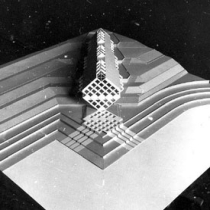Un condensatore sociale rurale. La fattoria collettiva di Nakotne come risorsa e come sfida

Pubblicato 2023-03-29
Parole chiave
- Azienda agricola collettiva,
- Architettura rurale,
- Edifici complessi
Come citare
Copyright (c) 2022 FAMagazine. Ricerche e progetti sull'architettura e la città

Questo lavoro è fornito con la licenza Creative Commons Attribuzione - Non commerciale - Condividi allo stesso modo 4.0 Internazionale.
Abstract
Attualmente, la collettivizzazione imposta dal regime sovietico può essere considerata solo in retrospettiva; ciononostante, l’ambiente costruito che ne è conseguito, pur avendo perso la funzione e il significato originari, continua a caratterizzare il paesaggio. Questo contributo prende in esame il caso di Nākotne (Lettonia), una azienda agricola collettiva istituita nel periodo sovietico la cui eccezionalità deriva dalla complessità dell’impianto, dal carattere dei suoi edifici, e dalla modalità di gestione. In questo caso, il presidente e l’architetto capo della fattoria collettiva scardinarono la standardizzazione imposta dal regime sovietico, favorendo la sperimentazione progettuale. In questo senso, risulta esemplare il Centro sportivo e culturale di Nākotne: un vero e proprio condensatore sociale, il possibile riuso in un diverso contesto politico-culturale che pone anche un problema di architettura.
Riferimenti bibliografici
- BELL S., NIKODEMUS O., PENEZE Z. e KRUZE I. (2019) – Soviet era landscape change and the post-Soviet legacy in Latvia. SHS Web Conf. 63 07003, DOI: 10.1051/shsconf/20196307003.
- BELL S., NIKODEMUS O., PENĒZE Z., et al. (2009) – Management of cultural landscapes: what does this mean in the Former Soviet Union: A case study from Latvia. Landscape Research, vol. 34, n° 4: 425-455. DOI: https://doi.org/10.1080/01426390903020328.
- BUCHLI V. (1998) – Moisei Ginzburg’s Narkomfin Communal House in Moscow. Journal of the Society of Architectural Historians, 57(2).
- BUMANE I. (1986) – Nākotne četrdesmitgades kalnā. Avots, Rīga.
- CHIZZONITI D. (2020) – Space and Figuration of the School Building in the Construction of the Metropolitan Periphery: The School as a Social Emancipation Workshop. In: Della Torre, S., Bocciarelli, M., Daglio, L., Neri, R. (eds) Buildings for Education. Research for Development. Springer, Cham. https://doi.org/10.1007/978-3-030-33687-5_3.
- DRĖMAITĖ M. (2017) – Baltic Modernism. Architecture and Housing in Soviet Lithuania. DOM Publishers.
- HATHERLEY O. (2015) – Landscapes of Communism. Penguin Books Ltd, London.
- HEYNEN H. e LOOSEN S. (2019) – Marxism and Architectural Theory across the East-West Divide. Architectural Histories, 7(1), p.21. DOI: http://doi.org/10.5334/ah.401.
- INGERPUU L. (2019) – Comparing the socialist rural architecture of the Baltic States: the past and the future of the administrative-cultural centres of collective farms. SHS Web Conf. 63 11004 (2019). DOI: 10.1051/shsconf/20196311004.
- KALM M. (2009) – “Does Urban Life Make Farmers Happy? The Central Settlements of the Collective Farms in the Estonian SSR”. Urban Planning and the Pursuit of Happiness. European Variations on a Universal Theme (18th–21st Centuries), Berlin: Jovis.
- LÜCHINGER A. (1980) – Structuralism in Architecture and Urban Planning. Structuralism as An International Movement, Stuttgart.
- LANDMAN K. (2020) – Inclusive public space: rethinking practices of mitigation, adaptation and transformation. Urban Des Int 25, 211–214. https://doi.org/10.1057/s41289-020-00136-4.
- MAČIULIS A. (2009) – Kęstutis Pempė: architekto biografija. Archiforma 2:42-48.
- MEYER H. (1931) – On Marxist Architecture. Union of Soviet Socialist Republics (USSR).
- MARSDEN T., WHATMORE S., MUNTON R. e LITTLE J. (1986) – “The restructuring process and economic centrality in capitalist agriculture”. Journal of Rural Studies, Volume 2, Issue 4, Pages 271-280, ISSN 0743-0167, https://doi.org/10.1016/0743-0167(86)90026-4.
- https://www.sciencedirect.com/science/article/pii/0743016786900264.
- MELLUMA A. (1994) – Metamorphoses of Latvian landscapes during fifty years of Soviet rule. GeoJournal, vol. 33, n° 1: 55-62. DOI: https://doi.org/10.1007/bf00810136.
- MURAWSKI M. e RENDELL J. (2017) – The social condenser: a century of revolution through architecture. 1917–2017. The Journal of Architecture, 22:3, 369-371, DOI: 10.1080/13602365.2017.1326680.
- NIGRELLI F. (a cura di) (2021) – Come cambieranno le città e i territori dopo il Covid-19: Le tesi di dieci urbanisti. Quodlibet, Macerata.
- SÖDERQVIST L. (2011) – Structuralism in architecture: a definition. Journal of Aesthetics & Culture, 3:1, DOI: 10.3402/jac.v3i0.5414.
- ŠIUPŠINSKAS M. e LANKOTS E. (2019) – Collectivist ideals and soviet consumer spaces: Mikrorayon commercial centres in Vilnius, Lithuania and Tallinn, Estonia. In D. Hess & T. Tammaru (Eds.), Housing Estates in the Baltic Countries. The Urban Book Series. Springer. 301-320. https://doi.org/10.1007/978-3-030-23392-1_14.
- VAITYS L. (2003) – Architektûra. Artseria, Vilnius.
- ZVIDRINŠ P. (1998) – Changes in Living Standards and Depopulation in Latvia in the 1990s. Social Indicators Research, 43(1/2), 121–140. http://www.jstor.org/stable/27522302.
- Intervista a Gunārs Valentīns Segliņš, ex capo della costruzione della fattoria collettiva Nākotne. 15.11.2021, online. Tutte le informazioni sono in possesso dell’autore.
- Intervista a Juris Kaņepe, ex agronomo della fattoria collettiva Nākotne, 18.12.2021, Nākotne. Tutte le informazioni sono in possesso dell’autore.
- Intervista a Silvija Zībarte, bibliotecaria locale della biblioteca Nākotne. 21.12.2021, Nākotne. Tutte le informazioni sono in possesso dell’autore.
